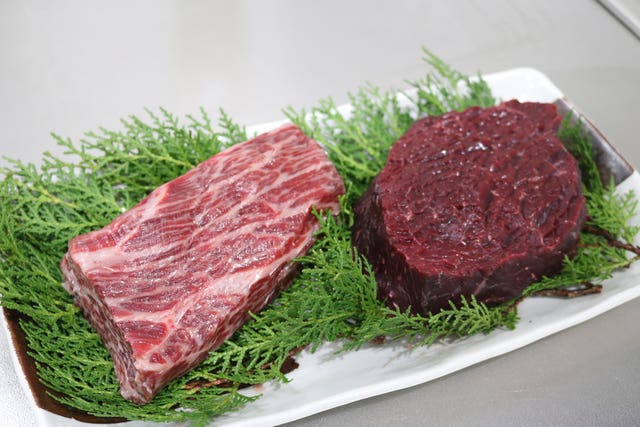Fin whale meat again on the menu in Japan for first time in almost 50 years
Japan’s Fisheries Agency this year added fin whales to its list of three whale species that can be legally hunted.

Meat from fin whales caught for the first time in nearly 50 years off Japan’s northern coast fetched up to about £1,030 per kilo at auction.
Japan’s Fisheries Agency this year added fin whales to its list of three whale species that can be legally hunted as the country expands commercial whaling along its coast.
Japan resumed commercial whaling within its exclusive economic zone after withdrawing from the International Whaling Commission in 2019. The IWC designated the fin whale as a species for protection from overhunting in 1976.
Japan said its recent stock surveys confirmed a sufficient recovery of fin whale populations in the North Pacific.

Officials said 30 of the whales – half of the quota of 60 – were caught this season. Japan set a combined catch quota of 379 for the three other whale species: minke, Bryde’s and sei whales.
The country’s only large-scale whaling fleet operator, Kyodo Senpaku, launched the Kangei Maru – a 9,300-ton new ship – this year in a show of determination to stay in the industry.
On Thursday, about 1.4 tonnes of fresh meat from several fin whales caught off Japan’s northern main island of Hokkaido was auctioned at the Sapporo fish market and the Kangei Maru’s home port of Shimonoseki.
In Shimonoseki, where 250 kilos of fin whale meat was flown from Hokkaido for the event, the tail meat – a delicacy known as “onomi” – fetched the day’s highest price at 200,000 yen (£1,039) per kilo, according to the city’s fishery promotion department.
“We hear the larger the whale, the better the taste, so I assume fin whales are more delicious than other kinds of whales, though I never had a chance to taste it and cannot compare,” city official Ryo Minezoe said.
Japan’s whaling has long been a source of controversy and criticism from conservationists.
But anti-whaling protests have largely subsided after Japan switched from much-criticised Antarctic “research whaling” – seen as a cover for commercial hunts – to commercial whaling off the country’s waters.
Last year, Japanese whalers caught 294 minke, Bryde’s and sei whales – less than 80% of the quota and fewer than the number once hunted in the Antarctic and the north-western Pacific under the research program.
Whaling officials link the declining catch to climate change, but critics say overhunting may be the cause.
Nanami Kurasawa, who heads a conservationist group Dolphin and Whale Action Network, opposes resuming hunts of fin whales, saying they had gone nearly extinct after overhunt decades ago and their details around the Japanese coasts are not fully researched.
Whalers want to go after larger whales because of efficiency, but they should more thoroughly investigate whale stock, she says.
Whale meat in Japan was an affordable source of protein for the country’s malnourished population in the years following the Second World War, with annual consumption peaking at 233,000 tons in 1962.
Other meats have largely replaced whale and supply has since fallen to about 2,000 tons in recent years, Fisheries Agency statistics show.





